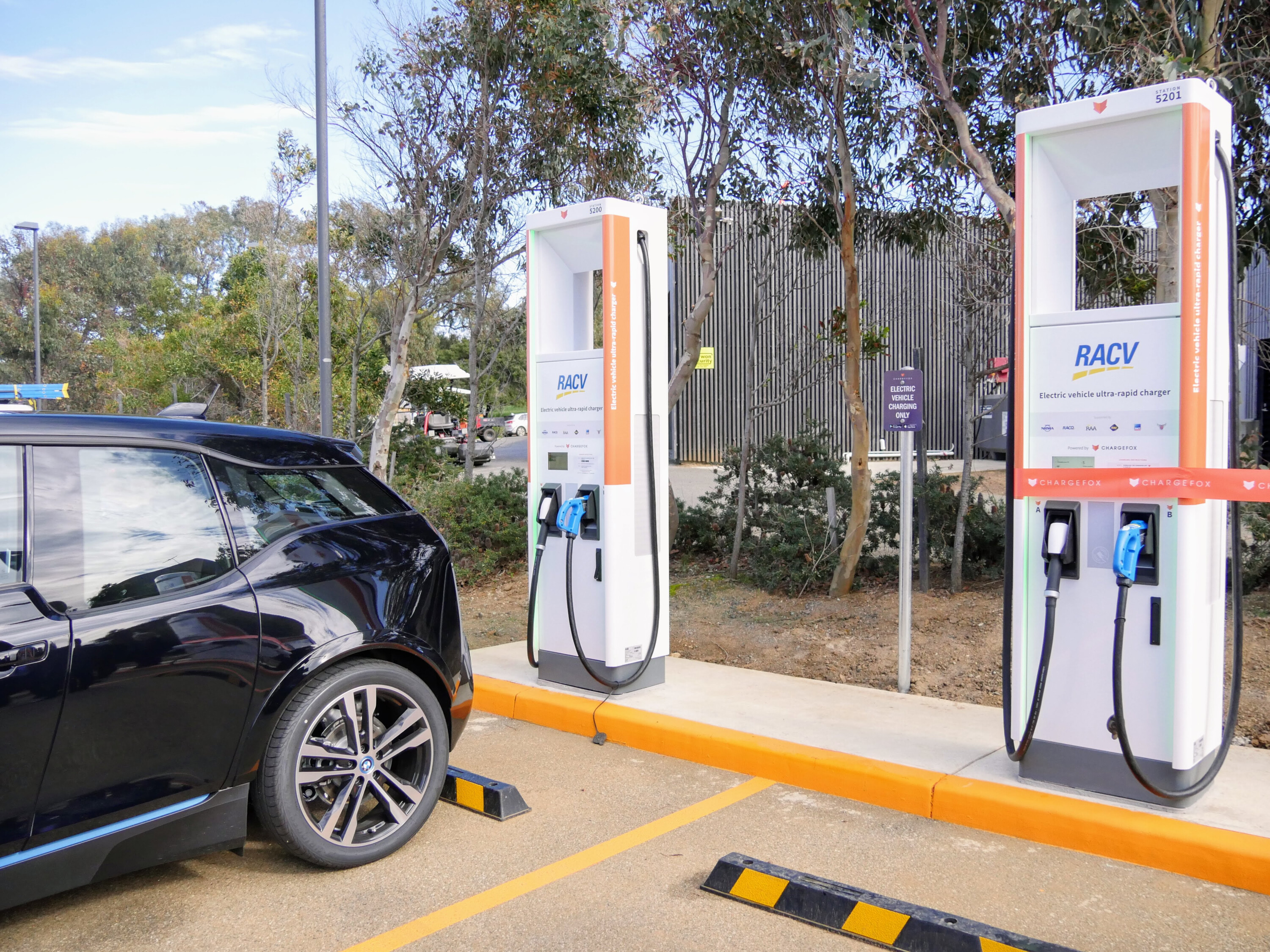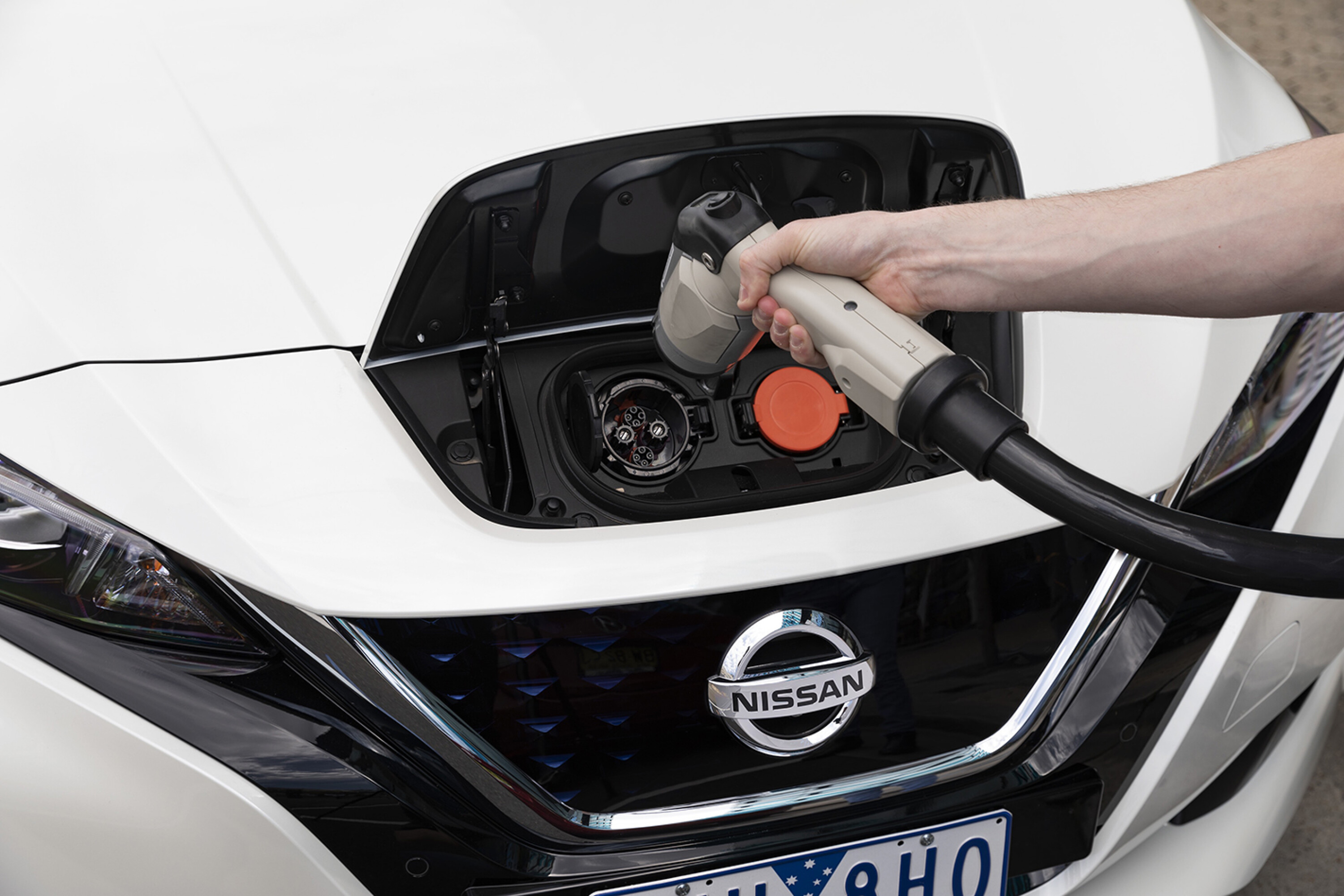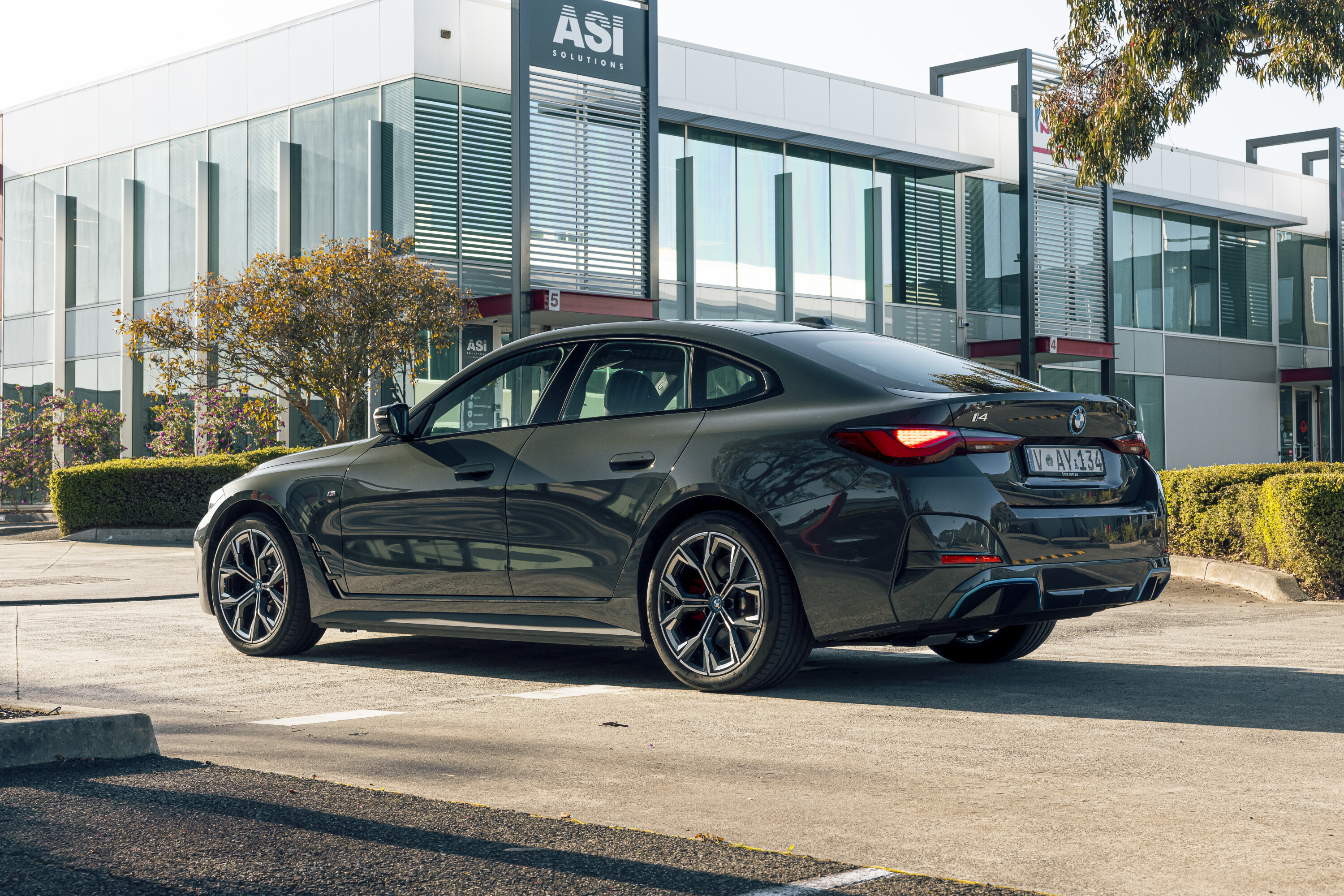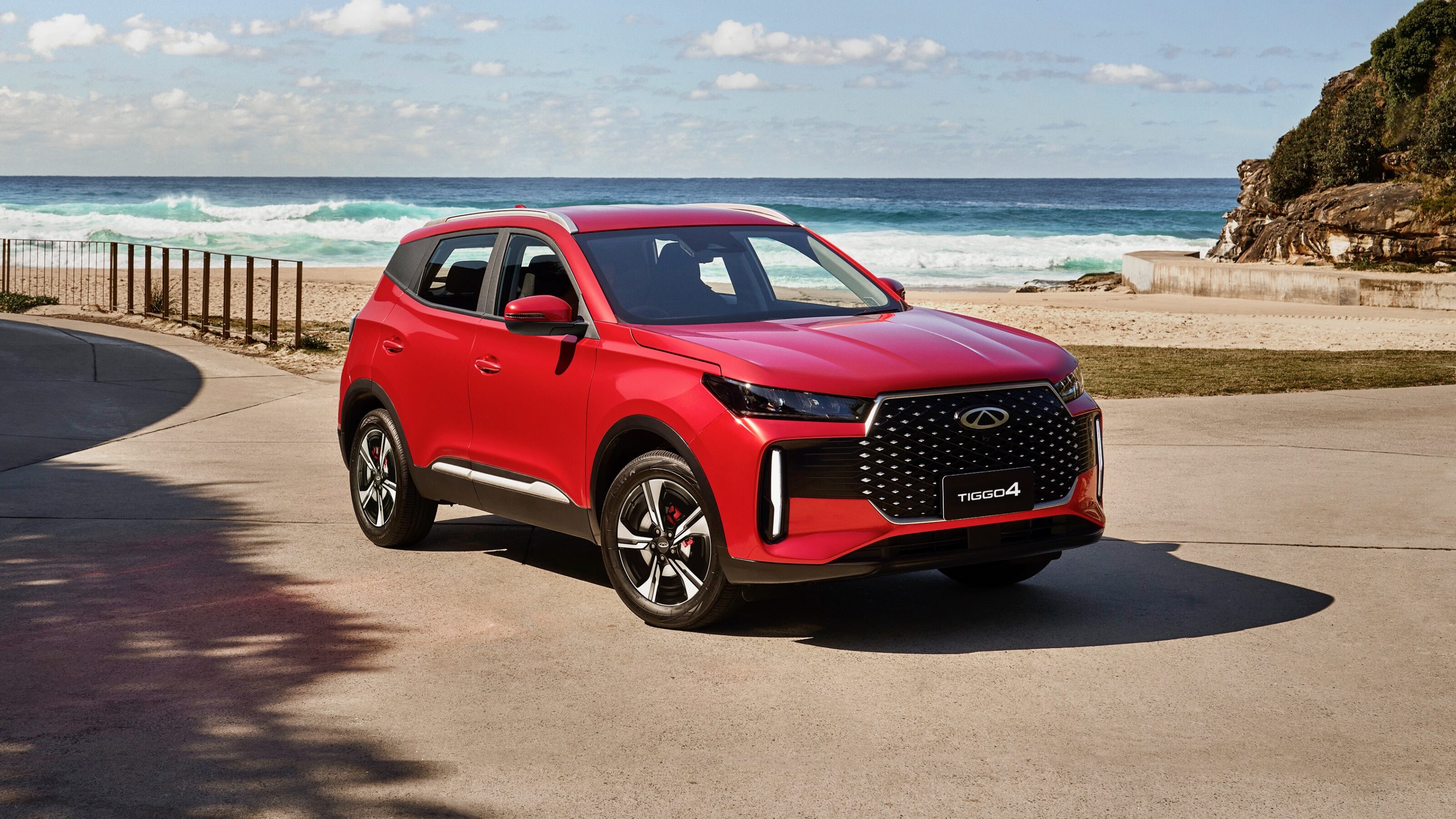
Chargefox chief executive John Sullivan spoke with WhichCar on criticism of charger reliability, how the business is funded – and the bold promise that public charging will dramatically improve in 2024.
Snapshot
- Chargefox CEO promises to dramatically improve public EV charging in a year
- Outlines reliability complaints, why it wonu2019t install new stations itself
- Addresses accusations on government funding, sustainability, CHAdeMO plug support
A search online for electric vehicle charging reliability in Australia often surfaces two words: Chargefox and Tritium.
Valid or not, user and media criticism of Australia’s largest public EV charging network’s faulty chargers – particularly at key Chargefox-owned locations, including Melbourne Airport West, Sydney’s Zetland, and Goulburn outside of Canberra – has come thick and fast over the past year.
There have also been vocal complaints about not receiving advertised charging speeds – even though these concerns can often be misguided or poorly informed, given the variety of factors that affect charging – and accusations at its business operations.
How bad is it?
It’s human nature for a bad customer experience to turn into criticism shared far and wide, solicited or not – often more than it is to shout the praises of a brand that quietly ‘gets it right’ – but those bad experiences can often be blown out of proportion as frustration and time do their thing.
In many cases, a brand can be hamstrung by external factors like issues with suppliers, unreliable or broken links in logistics, or just its own poor management. Whatever the cause, and however understandable – we’ve all felt mistreated at times over factors out of our control – the logo on the product is where user grievances are focused.
Please explain
For some insight into why chargers always seem to be faulty, and why issues aren’t resolved sooner, WhichCar invited new Chargefox CEO John Sullivan – appointed earlier this year – to explain how it all works (or doesn’t).

JUMP AHEAD
- ? Why are most Chargefox chargers not owned by Chargefox?
- ? Why are Chargefox chargers unreliable?
- ? Will public charging ever improve?
- ? Does Chargefox aim to be the only network for EVs similar to Tesla Superchargers?
- ⚡️ When will there be more chargers?
- ? Is Chargefox sitting on government money?
- ? Is the Chargefox network sustainable?
- ?? When will the CHAdeMO plug be phased out in Australia?
- ✏️ WhichCar’s take
- ? Is it time to make the electric switch?
\ud83e\udd14 How did Chargefox start?
John Sullivan: We were founded [in 2017]… At the time, there was only really one manufacturer who had charging infrastructure in the country [Tesla], which meant that no other OEM [original equipment manufacturer] or vehicle company would bring EVs to this country to sell.
So, Chargefox was founded on an idea from three founders, an agreement from the federal and Victorian Government, and also from certain motor manufacturers to commit to establishing a rival charging network in Australia to promote the adoption of EVs.
It was the founding of two companies – a charging infrastructure company called Jet Charge and a software company called Cogent, who built a software platform that sat over the top of chargers. It started with the [initial Chargefox-owned] 21 locations.
NOTE: In 2022, Chargefox was wholly acquired by the Australian Motoring Services (AMS). AMS is owned by state motoring clubs – including the NRMA, RACV, RACQ, RAA, RAC, and RACT.

? Why are most Chargefox chargers not owned by Chargefox?
Chargefox CEO John Sullivan says the company’s primary focus is partnering with organisations to install and maintain public EV charging stations on its software network – instead of building and operating infrastructure itself.
Sullivan: We basically don’t own the [majority of] the charging infrastructure. We work with other charge point operators [CPOs].
Most of them are the mobility clubs or energy companies like Engie, Yurika, Synergy, and Horizon, who put infrastructure in – but need to provide access to customers to find out if they’re available, drive to those locations, and then initiate a charge and receive billing. And, we build and manage reporting mechanisms on top of it.
Sullivan: Since founding, we have moved to a software business that builds software to sit on top of both public and private chargers, and grants access to chargers for charging EVs. So, you would consider us as a platform business – very similar to something like Uber or Airbnb, where neither company owns the customers or the infrastructure.
We won’t install any more [Chargefox-owned] chargers. We actually don’t need to. The network’s growing so fast, I’d be ‘muddying the water’.
It’s actually a big problem for [rival charging network providers] to find locations [to install stations] as well. So, competing with people who are trying to get onto your network for locations to install chargers – that’s not going to be a very good business for us.
We won’t install any more [Chargefox-owned] chargers. We actually don’t need to

? Why are Chargefox chargers unreliable?
While Sullivan won’t name specific manufacturers, he says public EV charging stations fault at times due to the increased use, weather conditions, and outdated ‘first-generation’ units. Read our detailed story here.
The Chargefox CEO also confirmed that all its 21 owned charging locations will be replaced with newer, more reliable modular units with power sharing (between multiple plugs) and load balancing capabilities in the next year.
John Sullivan: At the moment we’re the biggest network [in Australia]. Therefore, we draw more attention [and criticisms]… We’ve got more load on our system.
Whenever there’s a fault with a charger, it’s probably going to be a fault with a Chargefox charger… By sheer volume you hear more about Chargefox, because we’ve got that kind of network size outside of Tesla.
No one publishes a reliability report. They just make wild statements of how many chargers they have available… There are a lot of people regurgitating misinformation in the market. I think that’s discrediting EVs as a viable option. I would implore those companies to stop doing that.
We draw more attention [and criticisms]… We’ve got more load on our system.

? Will public charging ever improve?
Chargefox CEO John Sullivan promised bold expansion plans and improved charging station reliability – within just one year.
John Sullivan: Over the next year, we will have doubled the size of the network, we will have put new chargers in, we will have replaced older chargers with newer chargers. The network will become much more reliable, much better, there will be much more options for people to charge on our network.
If you look back in a year’s time, I reckon I’m going to be right on the money. Basically the network will be so much better, everybody’s network will be so much better. The problems we’re facing today will not be the problems we’re facing in a year’s time.
The problems we’re facing today will not be the problems we’re facing in a year’s time.
Literally, every graph is going up on SLAs [service level agreements]: chargers going in, in new locations, number of [regular] users, the size of charging sessions, and the rate at which vehicles are charging. All the metrics are going in the right direction. They’re not slight graphs; they’re almost vertical on almost everything that’s happening at the moment.
The main area that we focus on at the moment is improving driver etiquette with idle fees. We’re doing a trial over in Western Australia and trying to reduce what we call ‘parked time’ – which is when a car plugs in, when the charge session finishes, and how long the car is still connected.

? Does Chargefox aim to be the only or most significant network for EVs, similar to Tesla Superchargers?
It’s true that Chargefox was originally founded to rival Tesla’s Supercharger network, but Sullivan says it is time for the industry to stop boasting about their charging networks and cooperate to establish better accessible and reliable infrastructure.
Sullivan: The only way this industry is going to provide a viable charging opportunity to convert all vehicles from ICE [internal combustion engine] to electric is through partnership.
It’s going to be a group of us all willing to sit at a table and have everybody’s best interests… I would implore all other companies to work together and partner. I don’t see enough of that.
Sullivan: Everyone thinks they can build and dominate – and it’s folly. No one is going to build the only network that everybody needs. No one’s going to do it. We’re not going to do it.
This is a new industry. We make mistakes. The industry as a whole has not set itself up well for the [EV] adoption rates we’re getting today. Everybody in this industry feels it. We’re fixing the plane as it’s flying.
Everyone thinks they can build and dominate – and it’s folly.
⚡️ When will there be more chargers?
Sullivan says that while Chargefox won’t install any new additional stations itself, its charging provider partners are quickly expanding stalls.
Sullivan: We grow by anything between 100 and 200-plus [individual] plugs per month. The reason we grow at such a rapid rate in comparison to anyone else that builds charging infrastructure is that we work with other charge point operators [CPOs] to install chargers.
We have local councils, local governments, local small businesses, we have organisations that are focused on the best interests of the drivers and the communities that they’re in.
Sullivan: If you look at the RAA in South Australia, no one would build a network on the [scale that] RAA is building. There’s no money to be made on it. It’s a complete loss. There has to be someone whose best interest is the driving public.
And, the energy companies who have access to the energy to distribute out at a cost-level, that will give them a long-term investment and make money.

Sullivan: Our network will basically almost double every year from now on, in the number of plugs and a number of locations.
We also manage a bigger private network of charging stations for businesses. Over the next year or two you will see industries and government bodies convert their vehicles from ICE [internal combustion engine] to electric. I think that’s where the majority of the growth will be.
In five years, I think we’re going to see an exponential growth in public and private plugs on Chargefox to the point where it will continue to be the largest network because of the people we work with. We’re not trying to do everything ourselves.

? Is Chargefox misusing government money?
“Misinformation”. Sullivan on allegations that Chargefox has taken government funding while delivering unreliable infrastructure.
Sullivan: No, it’s not true. Chargefox was founded on a mixture of funding. The majority of it was from the mobility clubs, founders, and some of the directors and board.
We received a federal government loan because of the enormity of the cost. We have paid all of that money back. And, we received partial funding from the Victorian Government for seven Victorian sites out of the first 21 [Chargefox-owned locations].
We received a federal government loan… We have paid all of that money back.
Sullivan: We have not taken that money and simply had a royal time on wads of cash… I’ve heard the commentary a lot – and it grates quite a bit.
Actually, of the charge point operators [CPOs] – we’re not one, but we get lumped in with them – we’re probably the only business that statement should not be levelled at.
Everybody else has taken federal funding and co-grants – they have to match the funding from [the federal government’s Australian Renewable Energy Agency (ARENA)]. But, we haven’t received any that we have not paid back, apart from the Victorian Government.

? Is the Chargefox network sustainable?
The whole-of-life environmental sustainability of EVs is a contested issue, when charging is still mainly sourced from high-emitting power plants.
Sullivan says that while the network isn’t completely ‘green’, it is still better than fueling a petrol or diesel car.
Sullivan: At least 30 per cent of the power that’s consumed from the grid comes from renewable mechanisms. That’s only improving.
Drive a petrol or diesel car all you like. It’s not going to get any better. But, if you were to drive an electric vehicle, at least a third of the energy that you put in that car today will come from a sustainable means. If you charge it from home with solar, all of it comes from renewable means.
One direction’s going to get better, more effective and more efficient over time. The other is only staying where it is.
Drive a petrol or diesel car all you like. It’s not going to get any better.
Sullivan: On the 21 [Chargefox-owned] sites, they come primarily from either green certified or green sources, or we buy credits for the energy that’s on those sites. But even that’s a myth, because you’re buying an allotment of energy to be dispersed onto the grid.
We try to influence [CPO partners] to have sustainable energy agreements with their energy provider.
We’re doing some trials at the moment to see how we can influence people’s time-of-charge when the grids are full of sustainable renewable energy, over gas and coal generated energy.
Initially, we started with price; it’s made no difference whatsoever. We’re also trialling in South Australia, changing the rate of charge – faster when there is more abundance of sustainable energy, [slower] in the middle of the night. We’ll provide that information back up to ARENA and the state and federal governments.

?? When will the CHAdeMO plug be phased out in Australia?
Sullivan says the rare CHAdeMO ‘fast-charging’ plug type will remain in Australia for the foreseeable future to serve models like the Nissan Leaf and Lexus UX300e, along with imported Japanese EVs, and the used EV market.
Sullivan: We see varying degrees of charging – some by locations, some by charger.
In Melbourne, the use of CHAdeMO plugs is about 20 per cent of all the chargers – I was surprised by that figure. And then in other areas of Adelaide, I’ve found it down to about two or three per cent.

Should current and hopeful EV owners reasonably expect all that Sullivan has promised?
Chargefox’s new CEO appears forthright in describing the business’s troubles while mythbusting misconceptions in the market, but has boldly promised that public EV charging will dramatically improve from next year.
Only time will tell if these plans will prove out, but as the Australian EV sales continue to rapidly grow, the demand is there – primarily led by Tesla and BYD – despite some arguments otherwise.
Owners and the media have criticised Chargefox-owned stations for extended repair times at busy locations, with some reportedly out-of-order for several months. The painful manufacturer diagnosis and repair process that Sullivan described will also need attention to restore user trust.
Based on user experiences posted to the comments section of charger-finding website PlugShare, Evie Networks and BP Pulse have emerged as more dependable public charging sites.
Those sites mostly use Tritium’s newer, modular RTM and PKM machines, so it’s promising that Chargefox’s 21 owned locations will be completely refitted with newer modular stations. It’s a big investment, which as Sullivan points out, will mean improved reliability – since they’re better designed to handle higher loads, as seen in the US and Europe.
However, there’s the question of how long the replacement process will really take.
Chargefox’s own last ‘new’ chargers in Carseldine, Brisbane – which are just stalls moved from the flood-destroyed Toombul location – have been installed, but are still not operational (i.e. in the commission stage) for three months as at the time of publication.
The Australian Renewable Energy Agency (Arena) hasn’t committed to funding any EV charger maintenance beyond the initial installation, let alone mandating any availability and reliability rules to qualify for its grants.
The company’s software-focused platform approach also risks an inconsistent charging experience – across branding, wildly different charging costs, and accessibility.
Critically, as Sullivan and EVSE Australia admitted, not all charger-owning partners are as committed to maintaining and repairing broken stations, particularly when energy companies, governments, councils and local businesses may likely each have different priorities.
And, unlike the United States [US Department of Transportation ↗], the Australian Renewable Energy Agency (Arena) hasn’t committed to funding any EV charger maintenance beyond the initial installation, let alone mandating any availability and reliability rules to qualify for its grants.
Meanwhile, Tesla’s Superchargers – some of which have now been online for more than a decade – have largely proven dependable, integrating seamlessly with Tesla vehicle software and navigation to essentially eliminate ‘range anxiety’ on long trips.
As a major part of its overall marketing, Tesla ensures any downtime for its Superchargers is rare, making it the closest experience to using traditional fuel stations, despite attempts from other carmakers overseas. It remains a key selling point for Tesla EVs that other brands in Australia can’t easily match, even with its network opening up to all models at a price.
Europe’s utopian EV charging hubs with dozens of stations from different networks on a large forecourt – without forcing owners to drive somewhere else to find a working charger – looks likely to remain a pipe dream in Australia for some time.
We recommend
-
 Advice
AdviceEV charging etiquette tips: Dos and don’ts
What’s right and wrong when it comes to public EV charging and queueing? Here’s your definitive etiquette guide
-
 Advice
AdviceHow much does it cost to charge an electric car?
We outline the home charging and public charging network costs in this guide
-
 Advice
AdviceEV Charging Explained: Home & public charging, speed & plugs
Sponsored by GET Electric, this is a go-to guide to understand charging an EV at home or on the road




